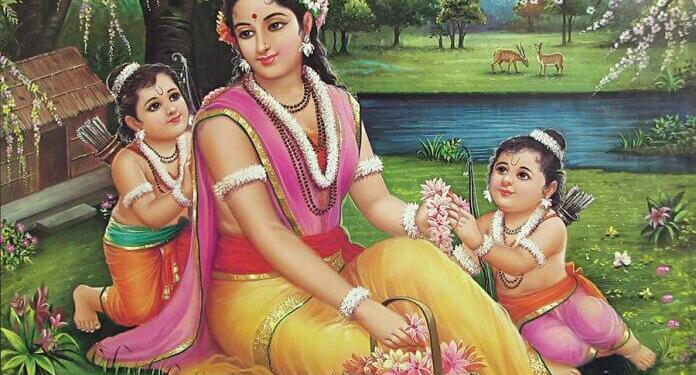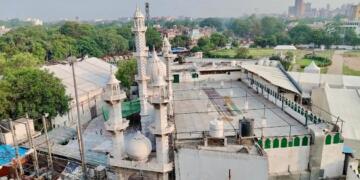Other names of Maa Sita
It is also discovered that Janaka, the king of Mithila (modern Janakpur, Nepal) and his wife Sunayana, have given her the name Sita and raised her as their own. Sita also inherits the other name Janaki as the daughter of King Janaka, ruler of the kingdom Mithila. Sita, was found in furrow by King Janaka, who decide to adopt her and she then became the princess of Mithila and daughter of Janaka.
Maithili, is a other name given to Sita as the princess of Mithila. Her father Janaka had earned the sobriquet Videha due to his ability to transcend body consciousness; Sita is therefore also known as Vaidehi. Overall goddess Sita is given total of 108 names which are collectively known as Ashtottara Shatanamavali of goddess Sita.
In the Ramayana, Sita is described as being born to Mother Earth (goddess Bhumi). The name means fickle, shimmering and unbalanced, like the goddess of fortune. According to the Ramayana, Janaka found her in a box while she was plowing the ground during the Yajna to please Indra.
What Sita Means
Sita means furrow, and this name is associated with goddess Sita Mata, who is also known as daughter of goddess earth (Bhumi). Sita is the wife of Lord Ram. Shree Ram is the seventh incarnation of Lord Vishnu on earth.
Ramanyana: In brief
Dasharatha was the king of Ayodhya and he had three wives and four sons, Rama, Lakshmana, Bharata and Shatrughana. Rama is the ideal and perfect son, and he grows up with his siblings. When he comes of age, he marries Sita, the princess of a nearby kingdom. However, Bharata’s mother is Kaikeyi, who is upset that Rama is the crown prince. She requests a debt that Dasaratha owes her and asks that Rama be exiled for fourteen years and that his son Bharata be appointed crown prince.
The devastated Dasaratha has no other choice and Rama prepares to go into exile. However, Sita and Lakshmana will not leave his side and follow him into the forest. While in the forest, Surphanaka, a rakshasi (demon) woman falls in love with Rama and is injured by Lakshmana as she attempts to kill Sita. Surpanakha insists her brother Ravana, to avenge them to satisfy her revenge. Ravana has heard of Sita’s beauty and decides to abduct her. Using tricks and magic, he manages to drive Rama and Lakshmana away from Sita and abducts her from her to Lanka. While abducting Sita, Ravana is stopped by Jatayu, who fights against him to save goddess Sita from him but Ravana kills Jatayu.
Rama and Lakshmana travel everywhere in search of Sita, but without success. Eventually, they meet a band of vanaras or ape-men who promise to help him. One of the mighty warriors of the vanaras, Hanuman, becomes the staunch devotee of Rama. The vanaras search for traces of Sita and discover that she has been taken to Lanka. Hanuman flies to Lanka and confirms that she is imprisoned there. He contacts Sita and informs her of Rama’s whereabouts, promising that they will return from her to rescue her from her. Before returning to the mainland, Hanuman sets fire to the entire city of Lanka.
Rama, Lakshmana and the Vanar army build a causeway from the tip of India to Lanka. They travel to Lanka, where an epic battle ensues between the armies. Ravana is eventually killed by Rama and Sita is freed. They return to Ayodhya, where Bharata returns the crown to Rama.
Sita’s second exile
Lord Rama was already aware that people would definitely question goddess Sita’s purity, so to save her from the baseless accusations, she performed Agni Pariksha. Also. during that Agni Pariksha, the original Goddess Sita emerged from fire and the Chaaya Sita disappeared.
Even after the previous Agni Pariksha, people began to blame goddess Sita. The rumors spread like fire. Lord Rama’s utmost priority was his duty to protect his kingdom and the people of Ayodhya even if it meant to let go his beloved wife goddess Sita.
The pseudo liberals in India and around the world criticize Lord Rama by calling him a chauvinist, sexist and many other things, what they fail to understand or voluntarily decide to hide the real truth about banishment of goddess Sita. Here is an article where you can understand the real reason for the banishment and the real reason Lord Rama is called ‘Mariyada Purshottam Ram.’






























